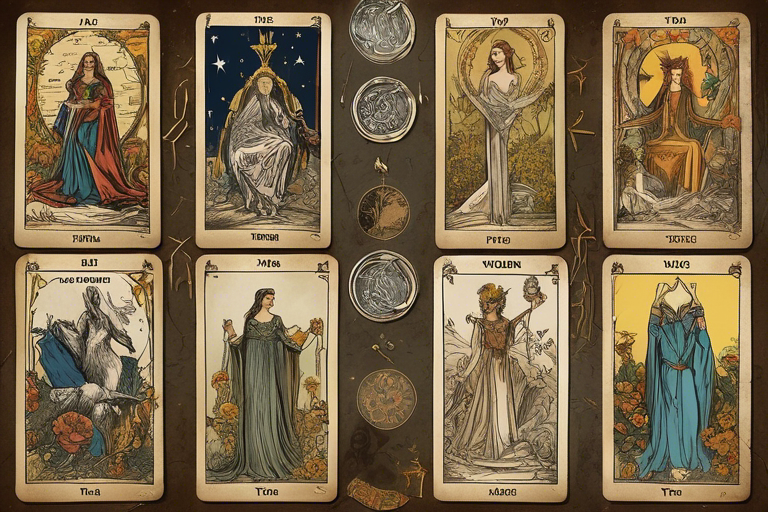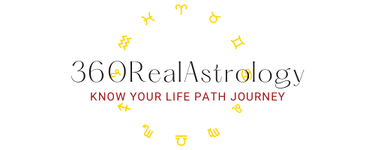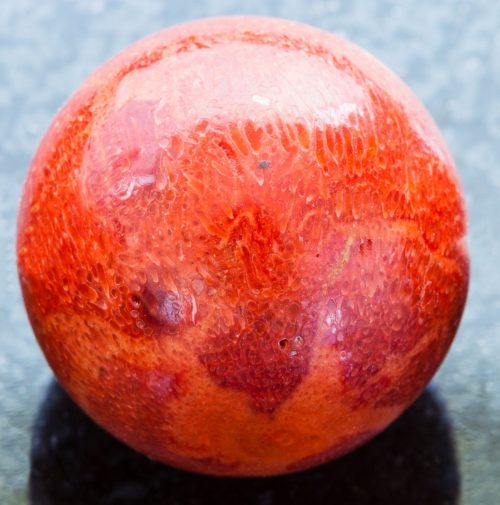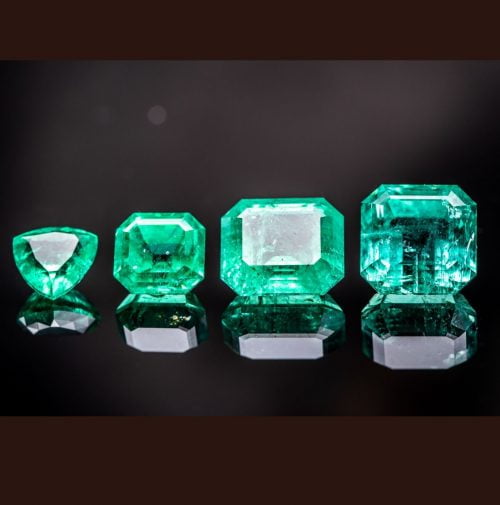Mastering the Art of Tarot: Proven Techniques for Accurate Card Interpretation

Unlock the ancient wisdom of the Tarot with our comprehensive guide on mastering the art of card interpretation. Whether you’re a seasoned Tarot reader or just starting your journey, this article will equip you with proven techniques for accurate and insightful readings.
With its rich symbolism and archetypal imagery, the Tarot offers a powerful tool for self-discovery, guidance, and divination. But understanding the deeper meanings behind each card can be a challenge. That’s where our expert tips and strategies come in.
Understanding the Tarot Deck
The Tarot deck is a powerful tool for self-reflection and divination. Before diving into card interpretation, it’s important to understand the structure and symbolism of the Tarot deck. The traditional Tarot deck consists of 78 cards, divided into the Major and Minor Arcana.
The Major Arcana consists of 22 cards, each representing a significant life lesson or spiritual theme. These cards, such as The Fool, The Magician, and The Empress, hold profound meanings and offer guidance on our life’s journey. Each card is rich in symbolism, inviting us to explore the archetypal energies and lessons they represent.
The Minor Arcana, on the other hand, consists of 56 cards divided into four suits: Wands, Cups, Swords, and Pentacles. These cards represent everyday experiences and challenges we encounter. Each suit corresponds to a specific element (fire, water, air, and earth), offering insights into different aspects of our lives.
The Importance of Card Interpretation
Card interpretation is at the heart of any Tarot reading. It’s the process of extracting meaning and insights from the cards drawn. While each card carries its own symbolism and interpretation, the magic happens when they come together to form a narrative.
Interpreting the Tarot requires a combination of knowledge, intuition, and personal experience. It’s not enough to simply memorize the meanings of each card; true mastery comes from understanding how the cards relate to one another and to the question or situation at hand.
By delving deep into the symbolism and archetypal meanings of each card, you’ll be able to uncover the hidden messages and wisdom they hold. Card interpretation is a journey of self-discovery, allowing you to tap into your intuition and connect with the universal energies that the Tarot represents.
Elements of a Tarot Reading
A Tarot reading consists of several key elements that work together to provide guidance and insights. Understanding these elements will help you structure your readings and ensure accuracy and clarity.
The first element is the question or intention. Before beginning a reading, it’s important to clarify the purpose and focus of the reading. Whether it’s a general overview of your life or a specific question, the question or intention sets the stage for the cards to provide guidance.
Next, the layout or spread determines the positions of the cards and their meanings. There are countless Tarot spreads to choose from, each designed for specific types of readings. Some spreads offer insight into the past, present, and future, while others provide guidance on relationships, career, or personal growth.
Once the cards are laid out, the interpretation begins. This is where your knowledge of the Tarot, intuition, and personal experience come into play. Each card is examined individually, paying attention to its position in the spread and its relationship with the surrounding cards. The interpretation is a fluid process, allowing the cards to speak to you and reveal their messages.
Finally, the conclusion or summary brings the reading to a close. This is where you summarize the main themes and messages that emerged from the cards. It’s important to provide a balanced and objective interpretation, offering both the positive and challenging aspects of the reading. The conclusion should empower the querent with insights and guidance for their journey ahead.
Techniques for Accurate Card Interpretation
Accurate card interpretation requires a combination of knowledge, intuition, and practice. Here are some proven techniques to enhance your Tarot reading skills and ensure accuracy:
- Study the symbolism: Take the time to study and understand the symbolism of each card. Explore the archetypal energies and meanings associated with the Major and Minor Arcana. This knowledge will serve as a foundation for your interpretations.
- Trust your intuition: While it’s important to have a solid understanding of the Tarot, don’t rely solely on memorized meanings. Trust your intuition to guide you in interpreting the cards. Pay attention to the emotions, images, and thoughts that arise as you examine each card.
- Consider the card’s position: The position of a card in the spread can provide additional insights into its meaning. For example, a card in the past position may represent a past event or influence, while a card in the future position may indicate upcoming opportunities or challenges.
- Look for patterns and connections: As you interpret the cards, look for patterns and connections between them. Notice recurring symbols, colors, or themes that emerge. These patterns can offer deeper insights and a more comprehensive understanding of the reading.
- Use your senses: Engage your senses while interpreting the cards. Pay attention to the imagery, colors, and symbols on each card. Notice how they make you feel and what thoughts or associations they evoke. This multisensory approach can bring the cards to life and enhance your interpretations.
Remember, accurate card interpretation is a skill that develops over time. Be patient with yourself and embrace the journey of learning and growth as a Tarot reader. With practice and dedication, you’ll become more confident in your interpretations and provide meaningful readings for yourself and others.
Connecting with the Cards
To master the art of Tarot card interpretation, it’s essential to develop a strong connection with the cards. Here are some techniques to deepen your connection and enhance your readings:
- Meditation: Set aside dedicated time for meditation with your Tarot deck. Clear your mind, focus on your breath, and allow the energy of the cards to flow through you. Visualize yourself surrounded by a white light of protection and intention. Connect with the energies of the Tarot and invite them to guide your interpretations.
- Daily draws: Pull a daily card to connect with the energies of the day. Reflect on the card’s meaning and how it relates to your current circumstances. This practice will strengthen your intuitive connection with the cards and deepen your understanding of their symbolism.
- Journaling: Keep a Tarot journal to record your readings, insights, and interpretations. Reflecting on past readings will help you identify patterns, track your progress, and gain a deeper understanding of the Tarot’s wisdom.
- Rituals: Create rituals that honor and connect with the Tarot. Light candles, burn incense, or use crystals to create a sacred space for your readings. These rituals can help you enter a focused and receptive state, allowing the cards to speak to you more clearly.
- Practice, practice, practice: The more you work with the Tarot, the stronger your connection will become. Practice reading for yourself and others regularly. Each reading will deepen your understanding of the cards and enhance your interpretive abilities.
Common Symbols and Meanings in Tarot
The Tarot is filled with rich symbolism and universal archetypes. Understanding these symbols and their meanings will greatly enhance your ability to interpret the cards. Here are some common symbols found in the Tarot and their general interpretations:
- The Fool: Represents new beginnings, taking risks, and stepping into the unknown.
- The Magician: Symbolizes manifestation, creativity, and the power to bring ideas into reality.
- The High Priestess: Represents intuition, psychic abilities, and the divine feminine.
- The Empress: Symbolizes abundance, nurturing, and the creative energy of Mother Earth.
- The Emperor: Represents authority, structure, and the masculine energy of leadership.
- The Lovers: Symbolize love, partnerships, and the merging of opposites.
- The Chariot: Represents willpower, determination, and taking control of one’s life.
- The Hermit: Symbolizes introspection, solitude, and the search for inner wisdom.
- Justice: Represents fairness, balance, and the consequences of one’s actions.
- The Hanged Man: Symbolizes surrender, letting go, and gaining a new perspective.
These are just a few examples of the rich symbolism found in the Tarot. As you deepen your understanding of the cards, you’ll discover even more layers of meaning and symbolism to explore.
Tarot Spreads for Specific Questions or Situations
Tarot spreads are a powerful tool for focusing your readings and gaining insights into specific questions or situations. Here are some popular Tarot spreads to try:
- Past, Present, Future: This simple three-card spread offers insights into past events, current circumstances, and future possibilities.
- Relationship Spread: Designed to explore the dynamics of a relationship, this spread examines the strengths, challenges, and potential outcomes.
- Career Spread: Focuses on career-related questions, offering guidance on current challenges, potential opportunities, and the best course of action.
- Celtic Cross: A classic ten-card spread that provides a comprehensive overview of a situation or question. It examines the past, present, and future, as well as the external influences, hopes and fears, and the final outcome.
- Decision-Making Spread: Helps you make difficult decisions by examining the pros and cons of different options and providing guidance on the best course of action.
These spreads are just a starting point. Feel free to modify or create your own spreads based on your specific needs and intentions. The key is to choose a spread that resonates with you and provides a clear structure for your readings.
Conclusion and Final Tips for Mastering Tarot Interpretation
Mastering the art of Tarot card interpretation is a lifelong journey. By understanding the structure and symbolism of the Tarot deck, developing your intuition, and practicing regularly, you’ll become a skilled and confident reader.
Remember to trust your intuition, connect with the cards on a deep level, and embrace the timeless wisdom that the Tarot offers. With time, practice, and dedication, you’ll unlock the profound insights and guidance that the Tarot has to offer.
So, whether you’re seeking personal insight or aiming to offer professional readings, our guide has provided you with the proven techniques and strategies to master the art of Tarot card interpretation. Embrace the magic of the Tarot and embark on a transformative journey of self-discovery and divination. Happy reading!








Connect me